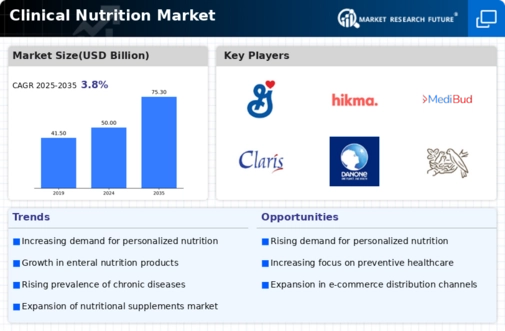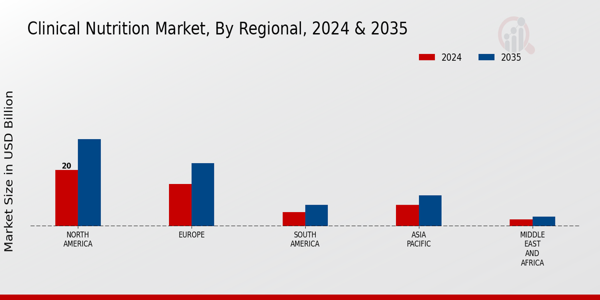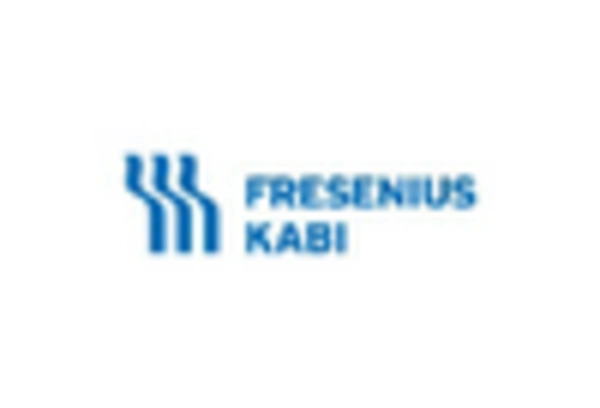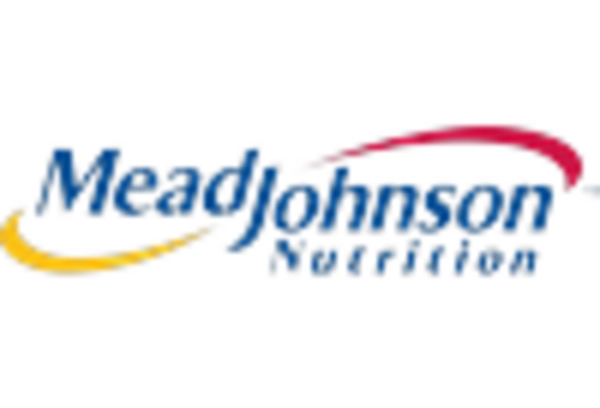Aging Population
The demographic shift towards an aging population is likely to have a profound impact on the Clinical Nutrition Market. As the global population ages, there is an increasing prevalence of age-related health issues, such as malnutrition and chronic diseases. This demographic trend necessitates tailored nutritional solutions that address the unique needs of older adults. Market data suggests that the demand for specialized nutritional products, including enteral nutrition and supplements designed for seniors, is on the rise. Companies are responding by developing products that enhance the quality of life for the elderly, thereby driving growth in the Clinical Nutrition Market. The intersection of an aging population and nutritional needs presents a significant opportunity for innovation and expansion within this sector.
Rising Health Awareness
The increasing awareness regarding health and wellness among consumers appears to be a pivotal driver for the Clinical Nutrition Market. As individuals become more conscious of their dietary choices, there is a growing demand for nutritional products that cater to specific health needs. This trend is reflected in the market, where the demand for functional foods and dietary supplements has surged. According to recent data, the market for dietary supplements is projected to reach substantial figures, indicating a robust growth trajectory. Consumers are actively seeking products that promote overall well-being, enhance immunity, and support chronic disease management. This heightened focus on health is likely to propel the Clinical Nutrition Market forward, as manufacturers innovate to meet the evolving preferences of health-conscious consumers.
Technological Advancements
Technological advancements in the field of nutrition are transforming the Clinical Nutrition Market. Innovations such as personalized nutrition apps, telehealth services, and advanced food processing techniques are reshaping how consumers access and engage with nutritional products. The integration of technology allows for more precise dietary recommendations tailored to individual health profiles. Market data indicates that the adoption of digital health solutions is increasing, with a notable rise in the use of wearable devices that track dietary intake and health metrics. This technological evolution not only enhances consumer engagement but also drives the development of new products that align with modern lifestyles. As technology continues to evolve, it is expected to play a crucial role in shaping the future of the Clinical Nutrition Market.
Rising Demand for Plant-Based Nutrition
The surge in demand for plant-based nutrition is significantly influencing the Clinical Nutrition Market. As consumers become more environmentally conscious and health-oriented, there is a marked shift towards plant-based diets. This trend is reflected in the increasing popularity of plant-based supplements and functional foods that cater to diverse dietary preferences. Market data indicates that the plant-based food sector is experiencing rapid growth, with projections suggesting continued expansion in the coming years. This shift not only aligns with consumer preferences for sustainable and ethical food choices but also presents opportunities for innovation in product development. The growing acceptance of plant-based nutrition is likely to drive the Clinical Nutrition Market, as companies adapt to meet the evolving demands of health-conscious consumers.
Increased Focus on Preventive Healthcare
The growing emphasis on preventive healthcare is emerging as a significant driver for the Clinical Nutrition Market. As healthcare systems worldwide shift towards preventive measures, there is a heightened demand for nutritional products that support health maintenance and disease prevention. Consumers are increasingly seeking out dietary solutions that can mitigate health risks and enhance overall wellness. Market data suggests that the preventive healthcare segment is expanding, with a notable increase in the consumption of functional foods and supplements. This trend is likely to encourage manufacturers to innovate and diversify their product offerings, catering to the rising consumer interest in preventive nutrition. The alignment of clinical nutrition with preventive healthcare strategies presents a promising avenue for growth within the Clinical Nutrition Market.


















Leave a Comment